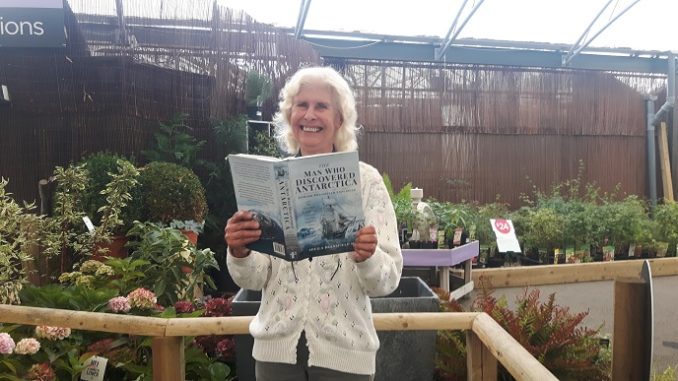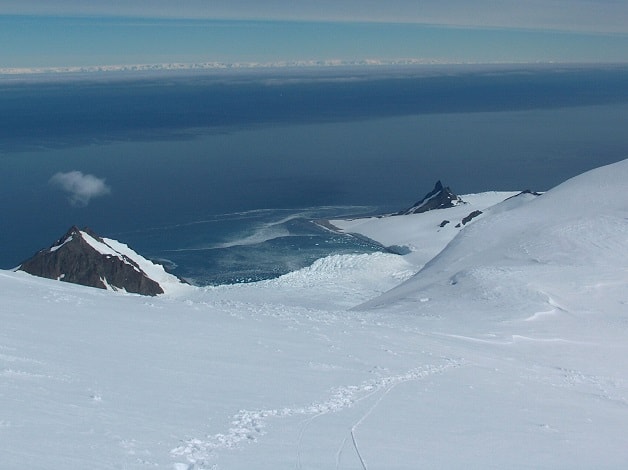
It has been a labour of love taking some 23 years of painstaking research, travel and writing but now Acol resident Sheila Bransfield has published a true tale of 19th century discovery.
The 74-year-old, a member of the UK Antarctic Heritage Trust, has produced the definitive biography of one of Britain’s greatest maritime explorers – Edward Bransfield.
The book has been endorsed by the UK Antarctic Heritage Trust, whose patron the Princess Royal, has written the foreword.
Former PA and current village parish councillor Sheila says the fascination with the explorer who shares her surname began when she was a child but research in earnest was undertaken from 1996, after her children had grown up.
She said: “When I was little we had a huge admiralty chart in the house and it had the Antarctic and the Bransfield Strait.
“I was fascinated by the place with our family name.”

It also resulted in Sheila writing a number of articles for historical journals and magazines before being accepted by the Greenwich Maritime Institute (University of Greenwich) for a Master of Arts in Maritime History due to her research and publications, receiving her award in 2002.
The Man Who Discovered Antarctica: Edward Bransfield Explained – The First Man to Find and Chart the Antarctic Mainland is published by Pen and Sword.
Edward’s tale
The book charts the life of Irishman Edward Bransfield who was the first man to chart parts of the shoreline in Antarctica in 1820, almost 50 years after Captain Cook claimed the honor of being the first man to sail into the Antarctic Ocean but declaring that there was no such thing as the Southern Continent.
Edward was 18 when he was press ganged into the Royal Navy but through hard work rose up the ranks to become a ship master.
Sheila said: “He worked hard, was never recorded as drunk and references from captains and officers all talk about his sobriety. He could probably read and write even though education of the Irish was not allowed under the British. It is likely he learnt from a ‘hedgerow’ teacher, named because they literally taught behind hedges.
“The book is about his journey and there is quite a lot about his later life in the Merchant Navy after his Antarctica discovery. He made the best of things and became a master navigator, the main person on a ship, so he made a place for himself.”
However, Edward did not receive the recognition he deserved with people of the time more interested in celebrating the North West passage.
Sheila said: “He did not enlist again. I think he was annoyed that people ignored him.”
Edward, who also discovered what is now Elephant Island and Clarence Island, claiming them for the British Crown, may or may not be Sheila’s great-great grandfather.
She knows from research that Edward and her great-great grandfather were both born in Cork around 1785 but definitive proof they are one and he same man has proved difficult to gain.
Sheila said: “I don’t know if we are related, Irish records before 1837 are very difficult to find, during the Troubles the main centre for records burnt down, but I know both families came from Cork.
“At times I would spend all day checking files, would find nothing but still go back. The first time I held the master’s log in my hands I burst into tears, I was so moved that I was holding work he had actually written.
“When the book was published I was over the moon. It shares the story life then, a grim life and nothing like Hornblower!
“When I look at my own beginnings ad what I’ve done, I feel I have achieved something too and so feel a lot like Edward.”
Despite Edward’s achievements, and many parts of Antarctica and an Antarctic survey vessel being named after him, as well as a Royal Mail commemorative stamp being issued in his name in 2000, the full story of his historic journey has not been revealed until the publication of Sheila’s work.
Even his grave, in Brighton, was in poor condition until Sheila was alerted to its location and poor condition in 1998 and began raising funds for its renovation.
The Man Who Discovered Antarctica: Edward Bransfield Explained – The First Man to Find and Chart the Antarctic Mainland can be found in shops and on sites including Amazon, priced £25 hardback and £8.99 ebook.

